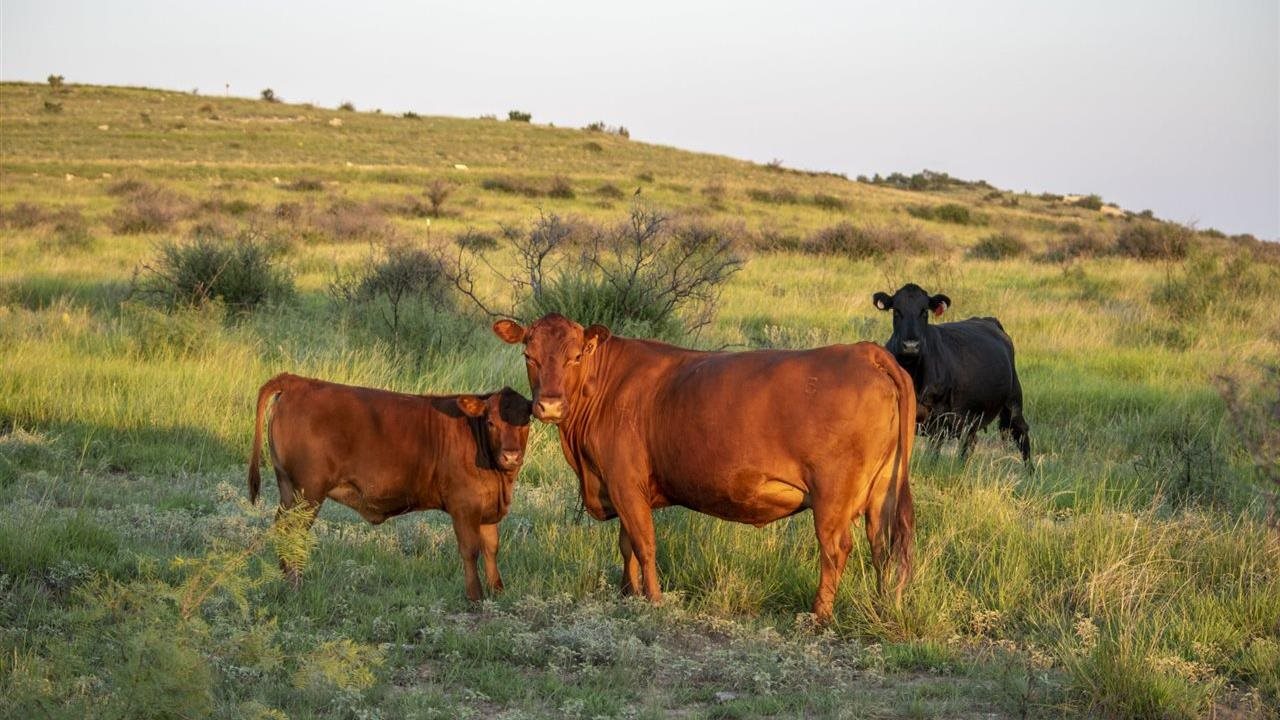
(BPT) – Beef is valued for its flavor and nutrition in cuisines worldwide. However, recently you may have heard that eating beef is bad for the environment, so you’re unsure if you should limit consumption. What you may not have heard about are the benefits that beef cattle provide for the planet.
Beef is such an ingrained part of American culture, it’s hard for most people to imagine their diet without things like hamburger and steak. Rather than limit consumption to effectively tackle climate change, community leaders can leverage the environmental benefits of beef. The experts at the National Cattlemen’s Beef Association, a contractor to the Beef Checkoff, point to three different ways cattle contribute to sustainability and help preserve land.
Efficient land use
In the face of a growing global population and a changing climate, beef cattle provide necessary protein in a uniquely efficient way. In fact, 90% of what cattle eat is forage and plant leftovers that people can’t eat and would otherwise go to waste.1 Thanks to their unique ability to “upcycle” human-inedible plants into beef, cattle contribute more than three times as much high-quality protein to the U.S. food supply than they consume, directly contributing to food security.2
Another important point to remember is cattle can utilize land that may otherwise be unusable for producing food. Approximately 29% of the land in the U.S. is pasture and rangeland that is too rocky, steep or arid for growing food crops, but it’s perfect for cattle.3,4 Cattle graze and roam in these spaces, foraging for food and getting exercise.
Ecosystem support
Beef cattle grazing is a key component of preserving and conserving precious ecosystems, many of which are at risk due to a changing climate and urban development. Cattle grazing provides benefits such as maintaining healthy soil, preventing wildfires and preserving open space for wildlife habitats.5
For example, when beef cattle graze, they fortify the land with moisture and nutrients, making it more resilient to drought, minimizing wasted water runoff, increasing plant growth, reducing the risk of wildfire by removing undergrowth that acts as fuel, and amplifying carbon storage.5,6,7 What’s more, animals and insects like hummingbirds, ducks, butterflies, ladybugs, elk and deer rely on the open land that beef cattle naturally maintain and protect.5
Without cattle grazing the land, habitats would be permanently destroyed by development, and the consequences for cherished ecosystems would be devastating. Research shows many endangered plants and wildlife depend on the land which cattle graze and maintain across the U.S.5
Carbon storage
Carbon is an important part of soil, helping with water retention and overall quality. Plus, sequestering carbon in soil is critical for buffering against the effects of climate change, as it removes it from the atmosphere and instead stores it underground.8 The good news is that beef cattle help store carbon underground naturally when they graze on the land.9
Most people don’t know that between 10% and 30% of the world’s carbon is stored in U.S. soil, protected by the cattle grazing on that land. If that land was developed, the carbon would be released, plus the land would no longer have the ability to capture additional carbon in the future.8,9,10,11 Studies found that beef cattle grazing on U.S. land is the equivalent of taking almost 6 billion cars off the road every year.12,13
Enjoying beef in your favorite dishes doesn’t have to be contradictory to your love of the planet. Understanding the full picture of beef cattle and the environment helps communities across the country and around the world make smarter, greener choices.
Sources:
- Broocks et. al. 2017b. Corn as Cattle Feed vs. Human Food. Oklahoma State University. https://extension.okstate.edu/fact-sheets/corn-as-cattle-feed-vs-human-food.html
- Baber, J.R. et al., 2018. Estimation of human-edible protein conversion efficiency, net protein contribution, and enteric methane production from beef production in the United States. Trans. Anim. Sci. 2(4): 439-450.
- Broocks, Ashley et al. 2017a. Carbon Footprint Comparison between Grass- and Grain-finished beef. OSU Extension, AFS-3292.
- USDA-ERS. 2021a. Economic Research Service using data from the Major Land Use data series. Available at: https://www.ers.usda.gov/data-products/major-land-uses.aspx
- Brunson, MW and L. Huntsinger. 2008. Ranching as a Conversation Strategy: Can Old Ranchers Save the New West? Rangeland Ecology & Management 61(2): 137-147.)
- Davies et al. 2005. Winter grazing can reduce wildfire size, intensity and behaviour in a shrub-grassland. International Journal of Wildland Fire. https://owri.oregonstate.edu/sites/agscid7/files/eoarc/attachments/854_winter_grazing_2015.pdf
- Taylor, Charles. 2006. Targeted Grazing to Manage Fire Risk. University of Idaho. Found on: https://www.webpages.uidaho.edu/rx-grazing/Handbook/Chapter_12_Targeted_Grazing.pdf
- Smith, P. 2012. Soils and climate change. Current Opinion in Environmental Sustainability 4: 539-544.
- Silveira, et al. 2012. Carbon sequestration in grazing land ecosystems. University of Florida Extension. https://edis.ifas.ufl.edu/pdffiles/SS/SS57400.pdf
- Schuman, et al. 2002. Soil Carbon dynamics and potential carbon sequestration by rangelands. Environmental Pollution 116: 391-396. https://www.onpasture.com/wp-content/uploads/2017/11/Soil-carbon-dymanics-and-potential-c-seq-by-rangelands.pdf
- Sanderson, et al. 2020. Cattle, conservation, and carbon in the western Great Plains. Soil and Water Conservation Society 75(1):5A-12A.
- Pendall, E., D. Bachelet, R.T. Conant, B. El Masri, L.B. Flanagan, A.K. Knapp, J. Liu, S. Liu and S.M. Schaeffer, 2018: Chapter 10: Grasslands. In Second State of the Carbon Cycle Report (SOCCR2): A Sustained Assessment Report [Cavallaro, N., G. Shrestha, R. Birdsey, M.A. Mayes, R.G. Najjar,S.C. Reed, P. Romero-Lankao, and Z. Zhu (eds.)]. U.S. Global Change Research Program, Washington, D.C., pp. 399-427. Using EPA’s GHG Equivalency Calculator and this study for the carbon stocks estimates: Total grassland carbon stocks in the conterminous U.S., estimated to be about 7.4 petagrams of carbon (Pg C) in 2005, are projected to increase to about 8.2 Pg C by 2050.
- EPA. 2021a. Inventory of U.S. Greenhouse Gas Emissions and Sinks: 1990-2019. U.S. Environmental Protection Agency, Washington, D.C.
